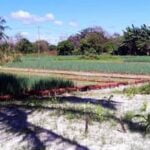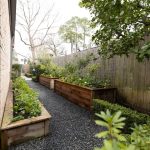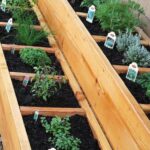Welcome to the Zone 3 Vegetable Gardening Calendar. If you’re a gardener living in Zone 3, you know how challenging it can be to grow vegetables in this northern climate. But fear not, because with the right knowledge and techniques, you can still have a thriving vegetable garden that produces an abundance of delicious produce. In this article, we will guide you through the best practices and tips for successful vegetable gardening in Zone 3.
Zone 3 is known for its short growing season, cold temperatures, and extremely low frost dates. These factors can make it difficult to cultivate certain types of plants, but with careful planning and preparation, you can still have a productive garden. We will start by delving into the characteristics of Zone 3, including average frost dates, temperature ranges, and unique challenges that gardeners face in this geographical area.
Next, we will focus on preparing your garden for optimal growth. This section will guide you through the process of soil testing and amendment, bed preparation techniques, and the importance of mulching in Zone 3 gardens. By creating the right environment for your plants from the beginning, you’ll set yourself up for success.
In addition to providing an extensive list of vegetables that thrive in Zone 3, we will also discuss seed starting and transplanting techniques. Starting seeds indoors or in a greenhouse allows you to get a head start before transplanting them outdoors when the weather becomes more favorable. We’ll provide insights into timing and essential techniques for successful transplanting.
To support your gardening tasks throughout the year, we have included a comprehensive Zone 3 planting calendar. This calendar outlines key dates for sowing, transplanting, and harvesting various vegetables specific to this climate zone. It’s an invaluable resource that will help you stay on track with your gardening tasks throughout the year.
Throughout this article series on Zone 3 vegetable gardening calendar, we’ll cover topics such as season extenders and protection, maintenance and care, harvesting and enjoying your produce, and more. So whether you’re a beginner or an experienced gardener in Zone 3, this series will provide you with valuable insights that will help you grow a successful vegetable garden. Stay tuned for the next section where we delve into understanding Zone 3 in more detail.
Understanding Zone 3
In order to successfully grow a thriving vegetable garden in Zone 3, it is important to understand the characteristics of this specific climate zone. Zone 3 is known for its cold temperatures and long winters, making it a challenging environment for gardeners. The average frost dates in this zone typically range from late May to mid-September, resulting in a relatively short growing season.
The temperature ranges in Zone 3 can vary greatly throughout the year. Summers can be warm with daytime temperatures reaching up to 85°F (29°C), while winter temperatures can drop as low as – 40°F (-40°C). These extreme temperature variations require special consideration when selecting vegetables for your garden.
One of the unique challenges that gardeners face in Zone 3 is the risk of frost damaging or killing tender plants. Late spring frosts and early fall frosts are common occurrences in this area, which means that careful planning and protective measures are necessary to extend the growing season and ensure successful harvests.
Techniques such as using season extenders like row covers or hoop houses, as well as planting cold-hardy varieties, can help mitigate the effects of frost and allow for a longer growing season.
To help you plan your planting schedule and understand the timing of different gardening tasks, here is an overview of average frost dates for Zone 3:
– Last Spring Frost Date: Late May
– First Fall Frost Date: Mid-September These dates may vary slightly depending on your specific location within Zone 3, so it is important to monitor local weather patterns and adjust your gardening schedule accordingly. By being aware of these average frost dates, you can plan when to start seeds indoors or transplant seedlings outdoors to maximize your growing season.
Overall, understanding the characteristics of Zone 3 is essential for successful vegetable gardening in this climate zone. By taking into account the average frost dates, temperature ranges, and unique challenges, you can make informed decisions when selecting vegetables, planning your planting schedule, and implementing protective measures to ensure a thriving garden.
Preparing Your Garden
One of the most crucial steps in preparing your Zone 3 vegetable garden is conducting a soil test. This test will determine the pH level of your soil as well as its nutrient composition, allowing you to make any necessary amendments. Most vegetables prefer a slightly acidic soil with a pH between 6.0 and 7.0.
If your soil’s pH is outside this range, you can adjust it by adding lime to raise the pH or sulfur to lower it. Additionally, add organic matter such as compost or well-rotted manure to improve the structure and fertility of the soil.
After conducting a soil test and making any necessary amendments, it’s time to prepare your garden beds. Start by removing any existing weeds or debris from the area. This can be done manually or with the help of a tiller or cultivator. Next, loosen the soil using a garden fork or rototiller, ensuring that it is not compacted. Amending the soil with organic matter at this stage can further improve its structure and fertility.
Now that your beds are prepared, consider mulching as a way to maintain moisture levels in your Zone 3 garden. Mulch helps retain moisture in the summer months while also insulating roots during winter. Organic materials such as straw, leaves, grass clippings, or wood chips all make excellent mulches for vegetable gardens. Apply a layer of mulch around plants once they have emerged and are established.
In summary, proper preparation of your Zone 3 vegetable garden starts with conducting a soil test and making necessary amendments based on its results. Once you have optimized your soil’s fertility, remove any weeds or debris from your garden beds before loosening the soil and incorporating organic matter. Lastly, remember to mulch your garden beds to retain moisture and insulate plant roots. By following these essential steps, you will create optimal growing conditions for your vegetables in Zone 3.
| Key Steps | Description |
|---|---|
| Soil Testing | Conduct a soil test to determine pH and nutrient levels, making necessary amendments. |
| Garden Bed Preparation | Remove weeds and debris, loosen soil, and incorporate organic matter for improved fertility. |
| Mulching | Apply a layer of organic mulch around plants to retain moisture and insulate roots. |
Zone 3 Vegetable Recommendations
Leafy Greens
One of the great things about Zone 3 gardening is that you can still grow a variety of leafy greens, even in colder temperatures. Some popular choices for this zone include lettuce, spinach, kale, and Swiss chard. These vegetables are not only cold-hardy but also packed with nutrients. They can be enjoyed fresh in salads or cooked in various recipes.
Root Vegetables
Root vegetables are well-suited to the colder climates of Zone 3 because they can withstand frost and stay in the ground longer. Carrots, beets, radishes, and turnips are just a few examples of root vegetables that thrive in this zone. These versatile vegetables offer a range of flavors and textures and can be used in soups, stews, roasts, and other dishes.
Surprising Choices
While some vegetables may seem challenging to grow in Zone 3, there are surprising choices that can thrive under these conditions. For example, certain varieties of tomatoes such as Siberian or Sub-Arctic types have been bred specifically for colder climates and can produce delicious fruit even in chilly temperatures. Other unexpected options include winter squash varieties such as Acorn or Butternut squash that can withstand cooler conditions.
It’s essential to choose vegetable varieties that are well-suited to your specific climate zone. Check with local nurseries or gardening experts who have experience with Zone 3 gardening to get recommendations on which varieties perform best in your area. By selecting the right vegetable varieties, you’ll increase your chances of success and enjoy a bountiful harvest throughout the growing season.
Seed Starting and Transplanting
Starting seeds indoors or in a greenhouse is an excellent way to give your Zone 3 vegetable garden a head start and maximize your growing season. By starting seeds indoors, you can control the environment and provide optimal conditions for germination and early growth. Here are some valuable insights into seed starting and transplanting in Zone 3:
- Ideal Timing: It is crucial to start your seeds at the right time to ensure healthy growth and successful transplanting. The timing varies depending on the specific vegetable, but as a general rule, you want to start seeds indoors about 6-8 weeks before the last frost date in your area. Some cold-hardy crops like lettuce and kale can be started even earlier.
- Container Selection: Choose containers that provide ample drainage to prevent waterlogging. Biodegradable peat pots or trays are popular options as they can be planted directly into the ground without disturbing the roots. Alternatively, you can also use plastic trays or recycled containers with drainage holes at the bottom.
- Soil Mix: Use a high-quality seed-starting mix that is lightweight, well-draining, and sterile to reduce the risk of diseases. Avoid using garden soil, which may contain pests or pathogens.
- Light and Temperature: Place your seed trays in a location that receives bright, indirect sunlight or invest in fluorescent grow lights if natural light is limited. Maintain an ideal temperature between 60°F (15°C) to 75°F (24°C) during germination.
- Transplanting Techniques: When your seedlings have developed their first true leaves and are large enough to handle, they are ready for transplanting outdoors. Harden off your seedlings by gradually exposing them to outdoor conditions before planting them in their final positions.
- Spacing Guidelines: Follow the recommended spacing guidelines for each vegetable when transplanting them into your garden soil. Proper spacing ensures good airflow and helps prevent diseases caused by overcrowding.
By starting seeds indoors or in a greenhouse, you can extend your growing season and get a head start on your Zone 3 vegetable garden. With the proper timing, containers, soil mix, light, temperature, and transplanting techniques, you’ll set yourself up for a successful and bountiful harvest.
Zone 3 Planting Calendar
Sowing Dates
The Zone 3 Planting Calendar is an essential resource for any vegetable gardener in Zone 3. It provides a comprehensive guide to the key dates for sowing, transplanting, and harvesting various vegetables throughout the year. When it comes to sowing seeds, timing is crucial for successful germination and healthy plant growth. The calendar outlines the recommended dates for sowing each vegetable crop, taking into account the average frost dates and temperature ranges of Zone 3.
Some cold-hardy vegetables can be directly sown outdoors in early spring as soon as the soil can be worked. These include spinach, kale, peas, and radishes. Other crops that require warmer soil temperatures before planting, such as tomatoes and peppers, should be started indoors or in a greenhouse several weeks before the last frost date. By consulting the planting calendar, you can ensure that you sow your seeds at the optimal time for each specific crop.
Transplanting Guide
Transplanting young seedlings from indoor pots or trays to their permanent location in the garden is another important step in vegetable gardening. This process allows plants to establish stronger root systems and adapt to outdoor conditions before they start producing vegetables.
The Zone 3 Planting Calendar provides guidelines on when to transplant different vegetable crops based on their needs and tolerances. For some cold-hardy plants like cabbage and broccoli, they can be transplanted as soon as they reach sufficient size and hardiness. On the other hand, heat-loving plants such as zucchini and melons need to wait until after the last frost date when temperatures are consistently warm.
It’s important to note that transplanting should be done carefully to avoid damaging the delicate roots of seedlings. The calendar offers advice on proper techniques for transplanting, such as preparing the soil beforehand, providing adequate water and sunlight after transplantation, and protecting young plants from sudden fluctuations in temperature or strong winds.
Harvesting Guidelines
The Zone 3 Planting Calendar also includes valuable information on when to harvest your vegetables for optimal flavor and quality. Harvesting too early or too late can impact the taste and texture of your produce, so it’s essential to know the right timing for each crop.
Leafy greens like lettuce and spinach should be harvested when young and tender, before they start bolting in response to increasing temperatures. Root vegetables such as carrots and beets are generally ready for harvest when they have reached the desired size, usually around 60-80 days after sowing. Tomatoes, peppers, and other fruiting crops should be picked when they have fully ripened on the vine to ensure maximum flavor.
By following the guidelines provided by the planting calendar, you can stay on track with your gardening tasks throughout the year. This comprehensive resource will help you plan and organize your vegetable garden effectively and make the most of each growing season in Zone 3.
Season Extenders and Protection
Season Extenders and Protection: Learn about the various methods and techniques for extending the growing season in Zone 3. As a gardener in Zone 3, you face the challenge of a relatively short growing season due to cold temperatures and frost. However, with the use of season extenders and protective measures, you can prolong your growing time and ensure a bountiful harvest.
One effective method for extending the growing season in Zone 3 is through the use of cold frames. These structures are made with transparent materials such as glass or plastic, allowing sunlight to enter while protecting plants from cold temperatures. Cold frames essentially create a mini greenhouse effect, trapping heat inside and protecting your crops from frost.
They are especially useful for early spring planting or late fall harvests when temperatures may still drop below freezing. When using a cold frame, it is important to monitor the temperature inside and provide ventilation if necessary to prevent overheating.
Another popular technique for extending the growing season is by using row covers. Row covers are lightweight fabric covers that can be placed directly over your plants or suspended on supports above them. They provide an extra layer of insulation, retaining heat during colder nights and protecting plants from frost damage.
Row covers come in different thicknesses, so you can choose one appropriate for your specific needs. It is important to monitor moisture levels under row covers as they can create a humid environment which may lead to fungal diseases.
Hoop houses and polytunnels are similar structures that also provide protection from cold temperatures and frost while letting sunlight in. Hoop houses consist of hoops or arches made of PVC or metal that form a tunnel shape over your garden bed. A waterproof cover is then stretched over the hoops, creating a protected space for your plants.
Polytunnels are larger versions of hoop houses, often used on commercial farms. Both these structures help trap heat during colder weather and shield plants from harsh conditions like wind and snow.
By utilizing these season extension techniques, you can start your Zone 3 garden earlier in the spring and enjoy fresh produce well into the fall. Experiment with different methods and find the one that suits your gardening style and needs. With the right protection, you can maximize your growing season and ensure a successful vegetable garden in Zone 3.
Maintenance and Care
Maintenance and Care: Dive into best practices for maintaining a healthy and thriving vegetable garden in Zone 3.
Once you have established your Zone 3 vegetable garden, it is essential to focus on maintenance and care to ensure its success. One crucial aspect to consider is watering. Zone 3 can experience dry periods, so it is important to provide consistent moisture to your plants.
Water deeply and infrequently rather than shallowly and frequently, allowing the water to penetrate the root zone. Consider using soaker hoses or drip irrigation systems to deliver water directly to the base of your plants while minimizing water loss through evaporation.
In terms of fertilizing, it is essential to understand the unique needs of plants in Zone 3. The short growing season means that nutrients need to be readily available for optimal growth. Start by amending your soil with compost or well-rotted manure before planting, which provides a slow release of nutrients throughout the growing season. Additionally, consider regularly feeding your vegetables with a balanced fertilizer appropriate for this climate zone.
Pest control and disease prevention are also significant factors in maintaining a healthy vegetable garden in Zone 3. Common pests in this area include aphids, cabbage worms, and flea beetles. Regular inspection of your plants can help identify problems early on so that you can take appropriate action, such as handpicking pests or using organic insecticides if necessary. Disease prevention starts with choosing disease-resistant plant varieties when possible and ensuring good air circulation by spacing plants adequately.
By following these maintenance and care practices specific to Zone 3, you will be well on your way to enjoying a fruitful gardening season. Remember that each year brings its own unique challenges, so staying observant and adapting as needed will greatly contribute to the success of your vegetable garden in this climate zone.
Harvesting and Enjoying Your Produce
Harvesting your homegrown vegetables is one of the most rewarding experiences in vegetable gardening. After all the hard work and patience, it’s finally time to enjoy the fruits (or should we say vegetables) of your labor. In this section, we will explore the joy of harvesting your produce and provide you with some delicious recipes and preservation methods to make the most out of your Zone 3 harvest.
When it comes to harvesting vegetables in Zone 3, timing is crucial. Different vegetables have different maturity timelines, so it’s important to know when they are ready to be harvested. For example, leafy greens like lettuce and spinach can be harvested when they have reached a desirable size, usually around 4-6 weeks after planting. On the other hand, root vegetables like carrots and beets can be left in the ground until they reach their full size.
To ensure optimal flavor and freshness, it’s best to harvest your vegetables in the morning when temperatures are cooler. This prevents wilting and helps preserve their nutritional content. Use sharp scissors or pruners to carefully cut off leafy greens at the base without disturbing the rest of the plant. For root vegetables, gently dig around them with a garden fork or trowel before lifting them out of the soil.
Once you have harvested your vegetables, it’s time to put them to good use. Whether you plan on enjoying them immediately or preserving them for future use, there are plenty of options available. With an abundance of tomatoes, you can make flavorful pasta sauces or homemade salsa. Leafy greens can be used for salads or sautéed as a side dish. Root vegetables can be roasted or turned into comforting soups and stews.
Preserving your harvest is a great way to enjoy homegrown produce long after the growing season has ended. Freezing is a popular method for preserving many types of vegetables such as peas, beans, and corn. Blanch them briefly in boiling water, then transfer them to an ice bath to stop the cooking process.
Once cooled, pack them into freezer-safe containers or bags and store them in the freezer. Another option is pickling, which can enhance the flavor of cucumbers, peppers, and other firm vegetables. Vinegar, salt, and spices are used to create a brine that preserves the vegetables in jars.
Final Thoughts
In conclusion, the Zone 3 Vegetable Gardening Calendar is a valuable resource for gardeners in this challenging climate zone. Throughout the various sections of this article, we have explored important aspects of vegetable gardening, from understanding Zone 3 and preparing your garden to seed starting and planting recommendations. By following the guidelines provided in this calendar, you can cultivate a thriving vegetable garden and enjoy a bountiful harvest.
One key takeaway from this calendar is the importance of selecting cold-hardy vegetables that can withstand the harsh conditions of Zone 3. From leafy greens like kale and spinach to root vegetables like carrots and beets, there are plenty of options that thrive in this climate.
It is also crucial to start seeds indoors or in a greenhouse to give your plants a head start before transplanting them outside. This allows them to establish strong roots and better handle the frost dates that often occur in Zone 3.
Though gardening in Zone 3 can be challenging, it is important to stay positive and not get discouraged. Remember that each year brings new opportunities for growth and learning. Don’t be afraid to experiment with different varieties of vegetables or try out new techniques for season extension. With proper care, maintenance, and protection methods such as cold frames or row covers, you can extend your growing season and increase your chances of success.
So whether you are just starting out or have been gardening in Zone 3 for years, take advantage of the resources provided in this calendar to guide you through each step of the process. Happy gardening.

If you’re looking to get into vegetable gardening, or are just looking for some tips on how to make your current garden better, then you’ve come to the right place! My name is Ethel and I have been gardening for years. In this blog, I’m going to share with you some of my best tips on how to create a successful vegetable garden.





